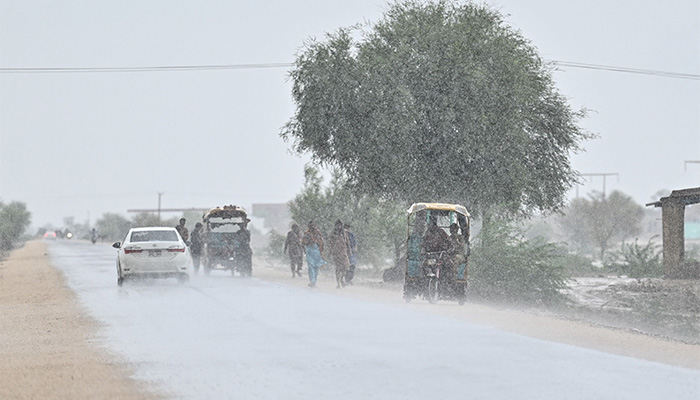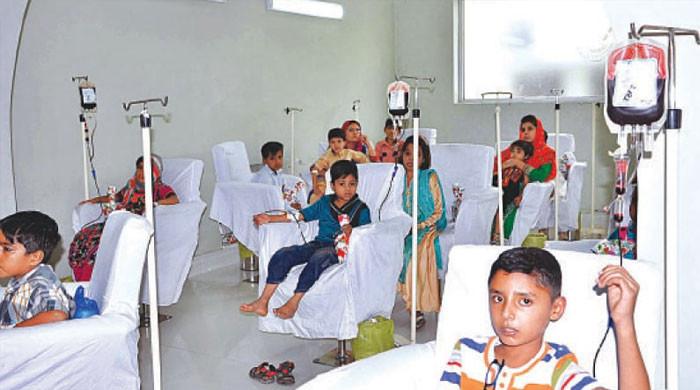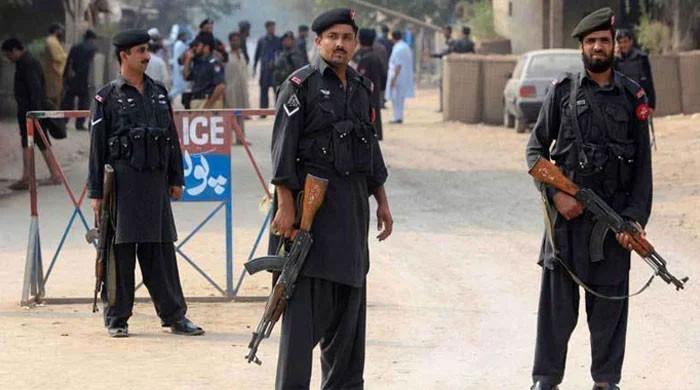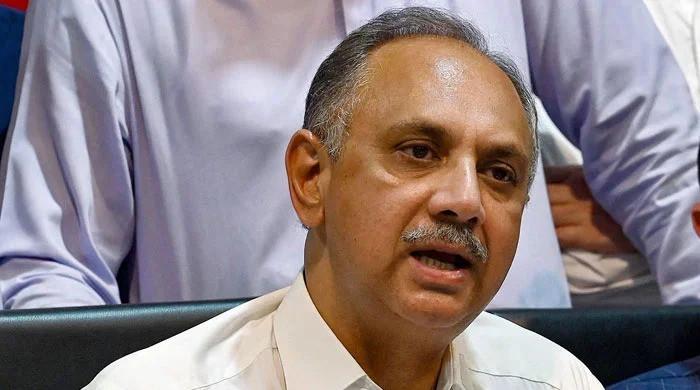At least 22 dead as torrential rains lash parts of country
Balochistan and KP report highest number of casualties in separate rain-related incident during 24 hours
August 04, 2024

- At least nine people die in separate rain-related incidents in KP.
- Low-lying areas in Sindh and Balochistan inundated with rainwater.
- High to very high levels of flash flooding likely in Balochistan: NDMA
At least 22 people were killed and scores were injured in the last 24 hours as torrential rains wrought havoc across Pakistan on Sunday, causing widespread losses to life, property, and infrastructure.
Several plain and hilly areas of Balochistan, Khyber Pakhtunkhwa, Sindh, and Punjab received heavy downpours, which flooded streams and rivers, as well as caused landslides in mountainous regions.
In KP, at least nine people died in separate rain-related incidents, including four who drowned in a tide of flood in Karak city today. The bodies of the victims were pulled out from the raging water during a search operation, rescue officials said.
In KP, at least nine people died in separate rain-related incidents, including four who drowned in floodwaters in Karak city today. The bodies of the victims were recovered from the raging waters by the rescurers.
Many people, including women and children, sustained injuries after a house's roof collapsed amid heavy rain in KP’s North Waziristan district.
Separately, another casualty was reported in Sindh by the Provincial Disaster Management Authority (PDMA) on Saturday.
Balochistan was the most affected province where rains and floods killed as many as 12 people in separate incidents in a day, according to the Provicial Disaster Management Authority (PDMA).
Cloudbursts, lightning strikes, and subsequent floods injured at least 32 people and damaged 263 houses, of which 91 were completely destroyed.
Rainwater entered houses and shops in low-lying areas in different cities, especially Mirpur Khas and Dadu.
As a result of heavy flow of floodwater, cracks appeared on two newly constructed bridges on a flood protection embankments in Dadu’s Tehsil Johi. Similarly, high-level flooding is reported in Gaj and Sol rivers .
Meanwhile, stormy rains in Balochistan inundated roads and low-lying areas of Chaman and Sibi, whereas, Toba Achakzai, Killa Abdullah, Muslim Bagh, Badini, Khanozai, Ziarat, and other areas.
The roads leading to tourist spots above the Ziarat Valley were affected due to heavy rainfalls.
According to local administration, a high-level flood was passing through the Bolan River at the locality of Pinjra Bridge where Levies personnel were deployed for relief activities.
Meanwhile, a high-level flood was also witnessed in Nari Headworks, Talli River and Lehri River.
The recent torrential rains in Balochistan not only affected 312 acres of crops and 19-kilometre of roads but also resulted in the deaths of 106 animals.
In the wake of torrential monsoon rains in the country, the National Disaster Management Authority (NDMA) has warned of high to very high levels of flash flooding in Balochistan and south-western Punjab in the days to come.
The alert from the country’s top disaster control authority indicated that the hill torrents and local nullahs in the Zhob, Kalat, Nasirabad, and Sibbi divisions are expected to experience high to very high levels of flash flooding, potentially damaging infrastructure.
A similar forecast was issued for the hill torrents and local nullahs in Dera Ghazi Khan and Rajanpur.
The NDMA has instructed all relevant departments to take necessary precautions to mitigate the possible effects of flooding and extreme weather.
The Pakistan Meteorological Department (PMD) said earlier this week that the current monsoon system will remain in the north-western province till August 6, resulting in heavy rains with strong winds in Khuzdar, Lasbela, Awaran, Panjgur, Barkhan, Musa Khail, Harnai, Naseerabad, Jhal Magsi, Jaffarabad, Dera Bugti, Quetta, Ziarat, Killa Abdullah, Killa Saifullah and Kalat.
The monsoon season, as per the authorities' statement issued on Friday, has resulted in the deaths of at least 30 people across Pakistan due to floods brought by torrential rains with Lahore witnessing almost 360 millimetres of rain which broke a 44-year record.
It is to be noted that the summer monsoon brings to South Asia about 70 to 80% of the region's annual rainfall between June and September.
Global organisations, such as the United Nations, see Pakistan as one of the countries most vulnerable to extreme weather and climate change, with floods wreaking havoc in 2022, killing more than 1,700 people and displacing millions.











